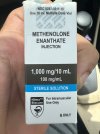Just email which you used to place order and if you have it on hand - order number.Do I have to write in private message my account details to get the credit?
You are using an out of date browser. It may not display this or other websites correctly.
You should upgrade or use an alternative browser.
You should upgrade or use an alternative browser.
MESO-Rx Sponsor HilmaBiocare Official
- Thread starter HilmaBiocare
- Start date
Stumbled across this post by accident. Good times :crying emoji:Every 5 Euro is just over $6 US
20€ = $25 US
25€ = $31 US
30€= $37 US
current exchange rate
Good times for US users though, ordering from EU gives you all natural discounts.
Last edited:
Hello sir. Create account on thebbpower.com using our discount link. You will get 20% discount automatically on your first purchase. Then you can shop on the website!Hi, I would like to make a purchase. I'm in Europe (very close to Spain). How can I put a sales order?
Code:
https://thebbpower.com/create_account?customer_bonus_id=KlGMcn717We can now offer free reships on USA orders even on Wholesale! Feel free to contact us!
Some info about Gyno
Gynecomastia is a polyethylological syndrome manifested by unilateral or bilateral enlargement of the breasts in men.
The clinical significance of gynecomastia is limited to three possible aspects:
gynecomastia as a symptom of endocrinopathy;
Gynecomastia as a manifestation of a breast tumor;
gynecomastia as a cosmetic problem.
Our classification of gynecomastia syndrome is based on the causes of imbalance of male and female sex hormones.
1)Physiological gynecomastia: newborn; adolescent; senile.
2)True gynecomastia: idiopathic: - persistent adolescent; - familial.
3)Symptomatic gynecomastia: in hormonally active ‑tumors [testicular tumors (leydigomas), tumors of various organs (lungs, liver, intestines) with chorionic gonadotropin production, androsteromas and adrenal gland estromas;
endocrine diseases, including genetically determined (true hermaphroditism, Klinefelter syndrome, men with karyotype XX, Kallman syndrome, idiopathic hypogonadotropic hypogonadism, congenital adrenal hyperplasia, increased aromatase activity, 17ketosteroid reductase deficiency‑, 3β‑ hydroxysteroid dehydrogenase ‑deficiency, Reifenstein syndrome, Kennedy disease, thyrotoxicosis);
primary hypoandrogenism (infectious orchitis, granulomatous orchitis, congenital anorchitis, castration);
in case of renal and hepatic insufficiency;
drug (estrogens, ‑human chorionic ‑gonadotropin, spironolactone, flutamide, cardiac glycosides, isoniazid, ketoconazole, metronidazole, calcium channel blockers, angiotensin converting enzyme inhibitors, amphetamine, cytostatics, cimetidine, diazepam, penicillamine, methyldopa, reserpine, tricyclic antidepressants, opiates and opioids, marijuana).
4)False gynecomastia: fatty hyperplasia of the breasts.
5) Breast tumors: malignant (cancer, sarcoma); benign (adenoma, lipoma, fibroma).
How gynecomastia appears
Unfortunately, most of the causes of gynecomastia are poorly understood and are discussed at the level of hypotheses. Mammary gland tissue is laid down equally in children of both sexes. The development of the mammary glands depends on the androgen-estrogen ratio (AER). When estrogen predominates in the pubertal period and androgen activity is low, the development and differentiation of mammary gland tissue is carried out according to the female type. At the reverse NPP the breast tissue does not develop. Nevertheless, even a slight decrease in APP can stimulate the proliferation of previously inactive glandular tissue at any age, leading to the development of gynecomastia.
Physiological gynecomastia
Small breast enlargement in newborns, adolescents, and older men is usually not considered pathological (physiological gynecomastia). In newborn boys, gynecomastia is associated with maternal estrogen penetration through the placenta. In adolescence, the appearance of excess breast tissue is associated, as a rule, with sharp fluctuations of the APP due to the instability of the hypothalamic-pituitary ‑system. After some time‑, this tissue spontaneously regresses. Gynecomastia often develops in mature men as well. In these cases there are often systemic diseases. Patients have to take medications that affect the endocrine system. Sometimes there is a slight decrease in postmenopausal NPP.
True gynecomastia
The development of excessive glandular tissue of the breasts in men can occur when the APP is unchanged. In this case, one of the possible causes of gynecomastia is decreased sensitivity of tissue receptors to androgen influence. This form of gynecomastia can develop even with normal or excessive androgens. It has been suggested that this pathogenetic variant is the basis of development of glandular hyperplasia in the most frequent (more than 50% of patients) so-called idiopathic gynecomastia. On the other hand, the sensitivity of the glandular tissue to estrogenic influences also varies in men. In individuals with gynecomastia, it is elevated. This phenomenon is the most likely cause of familial gynecomastia. The causes of persistent adolescent gynecomastia are poorly understood. Some specialists consider this form a variant of idiopathic gynecomastia, with the difference that the gynecomastia originated in adolescence and has not progressed since then.
Symptomatic gynecomastia
Gynecomastia can be a symptom of endocrine or, more seriously, cancer. Gynecomastia can occur in all conditions accompanied by androgen insufficiency (relative or absolute) or disruption of their action. Pathological enlargement of the mammary glands often, though not always, occurs in men with Klinefelter's syndrome. Gynecomastia may be associated with excessive estrogen levels due to tumor production of these hormones in the testicles or adrenal glands, or conversion of excess androgens to estrogens in the periphery. A hereditary disease manifested by increased aromatase activity, transmitted by the autosomal dominant type, is always accompanied by symptomatic gynecomastia. In this disease, the level of male sex hormones in the reference values, but with increased aromatase activity significantly increases the rate of formation of estrogen from them. If an excess of androstenedione is detected in the serum, the amount of estrogen increases significantly. Under the action of aromatase enzyme, androstenedione and testosterone are converted to estrone and estradiol, respectively. Excess androstenedione is a typical consequence of 21hydroxylase deficiency ‑in congenital adrenal ‑hyperplasia and androgen-secreting adrenal tumors. In 30% of men with thyrotoxicosis there is a decrease of AES, which leads to the development of gynecomastia. This is caused by increased levels of sex-steroid ‑binding globulin (SSSG) in thyrotoxicosis. As a consequence, the content of free, biologically active testosterone is reduced. The role of isolated hyperprolactinemia in the development of gynecomastia is often exaggerated. Pathological conditions (for example, kidney and liver failure) and some drugs may lead to gynecomastia even against the background of unchanged APP. The cause of breast tissue proliferation in these cases remains unclear. In patients with various diseases and symptomatic gynecomastia it may be difficult to distinguish the effect of the disease itself and the effect of the drugs. A large number of drugs can cause gynecomastia. Some of them disrupt the synthesis of testosterone. Opiates and opioids lead to secondary hypogonadism due to dysfunction of hypothalamo-pituitary system. At the same time, marijuana has a direct toxic effect on the testicles.
False gynecomastia
Fat deposits are common in obese men. It is not uncommon for gynecomastia to be unilateral or more pronounced on one side. Especially interesting are the observations when the overall level of obesity is less pronounced than the size of the fat deposits in the breasts.
Tumor gynecomastia
With regard to tumorigenic lesions, there have been a number of observations of breast cancer in men with mutations in the genes responsible for the synthesis of androgen receptors.
Clinical manifestations
The clinical diagnosis of gynecomastia is often subjective, as it is difficult to clearly determine on physical examination the ratio of glandular to fat tissue. One important step in the clinical examination is to determine the general degree of virilization and to identify symptoms suggestive of hypoandrogenism or estrogenization (diminished libido, decreased potency, altered hairiness, etc.). Patients should be specifically asked about their use of pharmaceutical and illegal (narcotic) drugs, as well as their alcohol consumption. Palpation of the testicles is an essential part of the physical examination in gynecomastia. It is necessary to pay attention to signs of systemic diseases (liver, kidney, etc.). Adolescent gynecomastia is considered a variant of normal, requiring no special treatment. In some teenage boys, the proliferation of glandular tissue can be expressed to a significant extent and create cosmetic and psychological problems. Adolescent gynecomastia develops after the beginning of puberty. In the case of gynecomastia in a child or adolescent without other signs of puberty, an endocrine disorder, mainly a hormone-producing tumor, should be excluded. In most cases, adolescent gynecomastia regresses spontaneously, but ‑may persist to some extent. ‑Then it is called persistent adolescent gynecomastia. In fact, it is one of the most common conditions in adult men who see a doctor for gynecomastia. Such a diagnosis can be made with certainty if gynecomastia occurred in adolescence, has not progressed since then, and the patient has no endocrine or any‑ or general diseases. Breast tumors in men are rare, but in order to avoid severe clinical consequences of late diagnosis, they should always be kept in mind in the differential diagnosis of gynecomastia. Unilateral enlargement of the breast can be a stage of development of bilateral gynecomastia or it can turn out to be a malignant tumor. Any asymmetric painless and dense swelling in the area of the halo should cause cancer suspicion.
Laboratory and instrumental studies
Despite the theoretical clarity of the causes of gynecomastia, a specific hormonal imbalance cannot be detected in more than half of patients. That is why the most frequent diagnosis is "idiopathic gynecomastia", which does not exclude the need for a thorough diagnostic search. The possible presence of an endocrine or systemic disease must be considered. It is usually sufficient to determine ‑basal levels of testosterone, estradiol, luteinizing hormone (LH), and follicle stimulating hormone (FSH). In simple adolescent gynecomastia, ‑there are no permanent hormonal shifts. It is important to assess the degree of‑ total androgenization of the patient. Laboratory tests (endocrinological, clinical and biochemical) should be tailored to the specific clinical condition of each patient. If gynecomastia is mild and not progressive, or if a diagnosis of adolescent gynecomastia is very likely, there is no need for thorough endocrinologic studies. In less clear cases, basic laboratory tests should include determination of testosterone, estradiol, SSSH, LH, FSH, prolactin, thyrotropic hormone, chorionic gonadotropin, α‑ fetoprotein levels, and tests evaluating renal and liver function. Other tests are sometimes useful, such as dynamic hormone determinations, karyotyping, or DNA testing. Mammography and ‑ultrasound (ultrasound) can quantify more clearly the ratio of glandular tissue to fatty tissue. Both methods can help suspect a tumor: mammography may show a stellate mass with indistinct contours, while ultrasound shows a hypoechogenic mass with irregular contours, possibly with hyperechogenic inclusions, and hypervascularization on color Doppler flow mapping. A puncture biopsy should be performed if there is any doubt about the benign nature of the mass, and an excisional biopsy should be performed if the results are doubtful or uninformative. A scrotal ultrasound scan must be performed if there is clinical or laboratory suspicion of an AEC change. The physician must constantly keep in mind the possibility of the existence of a hormonally active ‑testicular tumor.
Treatment
The efficacy of therapeutic treatment of gynecomastia in patients without obvious endocrine disorders with testosterone, dihydrotestosterone, as well as tamoxifen, danazol, testolactone, clomiphene should be considered unproven. At patients with idiopathic gynecomastia, taking into account low frequency of side effects, the anti-estrogen tamoxifen in a daily dose of 20 mg (in 2 receptions) is used. At the timely beginning of treatment (before development of fibrous changes) there is a probability of reduction of gynecomastia. If there is no effect within 2 months, treatment is usually stopped. The indications for surgical treatment of true gynecomastia are of a cosmetic nature. We must not forget that the psychological discomfort arising in this group of patients, can cause severe psychosomatic disorders and sexual maladaptation. Quite often, when gynecomastia is insignificant or when the patient is not bothered by a cosmetic defect, an explanatory talk about the absence of pathological effects on the body allows not to undertake any treatment. The same approach is used for physiological gynecomastia, when there is a high probability of spontaneous regression. If gynecomastia is a symptom of a serious disease, the treatment should be aimed primarily at the underlying cause. Thus, if gynecomastia is associated with an increase in estrogen levels or testosterone deficiency, the correction of these conditions may well lead to its disappearance. However, it is necessary to consider that even after the cure of the underlying disease, both proliferative processes and secondary fibrosis of glandular tissue may have an irreversible (or partially irreversible) character. In these observations, cosmetic indications for surgical treatment come to the fore. The rationale for mastectomy in elderly patients needs to be particularly careful. In addition to the need to diagnose the causes of gynecomastia, one must consider the general state of health and the risk of surgical intervention. In false gynecomastia associated with lipomatosis of the breasts, both surgeon and patient should be aware that the cosmetic effect of surgery may be more distressing than the preoperative appearance of the patient. The correct scope of surgical treatment for gynecomastia unrelated to the tumor process is subcutaneous mastectomy. For the most natural cosmetic effect and a comfortable postoperative period it is desirable to preserve the pectoral fascia and subcutaneous tissue. In case of large size of the mammary glands and pronounced mastoptosis the nipple-oreolar complex is transferred upwards on the skin-fatty flap. The success of the operation depends on the absence of residual tissue of the mammary glands and to the greatest extent on the experience and qualification of the surgeon.
Gynecomastia is a polyethylological syndrome manifested by unilateral or bilateral enlargement of the breasts in men.
The clinical significance of gynecomastia is limited to three possible aspects:
gynecomastia as a symptom of endocrinopathy;
Gynecomastia as a manifestation of a breast tumor;
gynecomastia as a cosmetic problem.
Our classification of gynecomastia syndrome is based on the causes of imbalance of male and female sex hormones.
1)Physiological gynecomastia: newborn; adolescent; senile.
2)True gynecomastia: idiopathic: - persistent adolescent; - familial.
3)Symptomatic gynecomastia: in hormonally active ‑tumors [testicular tumors (leydigomas), tumors of various organs (lungs, liver, intestines) with chorionic gonadotropin production, androsteromas and adrenal gland estromas;
endocrine diseases, including genetically determined (true hermaphroditism, Klinefelter syndrome, men with karyotype XX, Kallman syndrome, idiopathic hypogonadotropic hypogonadism, congenital adrenal hyperplasia, increased aromatase activity, 17ketosteroid reductase deficiency‑, 3β‑ hydroxysteroid dehydrogenase ‑deficiency, Reifenstein syndrome, Kennedy disease, thyrotoxicosis);
primary hypoandrogenism (infectious orchitis, granulomatous orchitis, congenital anorchitis, castration);
in case of renal and hepatic insufficiency;
drug (estrogens, ‑human chorionic ‑gonadotropin, spironolactone, flutamide, cardiac glycosides, isoniazid, ketoconazole, metronidazole, calcium channel blockers, angiotensin converting enzyme inhibitors, amphetamine, cytostatics, cimetidine, diazepam, penicillamine, methyldopa, reserpine, tricyclic antidepressants, opiates and opioids, marijuana).
4)False gynecomastia: fatty hyperplasia of the breasts.
5) Breast tumors: malignant (cancer, sarcoma); benign (adenoma, lipoma, fibroma).
How gynecomastia appears
Unfortunately, most of the causes of gynecomastia are poorly understood and are discussed at the level of hypotheses. Mammary gland tissue is laid down equally in children of both sexes. The development of the mammary glands depends on the androgen-estrogen ratio (AER). When estrogen predominates in the pubertal period and androgen activity is low, the development and differentiation of mammary gland tissue is carried out according to the female type. At the reverse NPP the breast tissue does not develop. Nevertheless, even a slight decrease in APP can stimulate the proliferation of previously inactive glandular tissue at any age, leading to the development of gynecomastia.
Physiological gynecomastia
Small breast enlargement in newborns, adolescents, and older men is usually not considered pathological (physiological gynecomastia). In newborn boys, gynecomastia is associated with maternal estrogen penetration through the placenta. In adolescence, the appearance of excess breast tissue is associated, as a rule, with sharp fluctuations of the APP due to the instability of the hypothalamic-pituitary ‑system. After some time‑, this tissue spontaneously regresses. Gynecomastia often develops in mature men as well. In these cases there are often systemic diseases. Patients have to take medications that affect the endocrine system. Sometimes there is a slight decrease in postmenopausal NPP.
True gynecomastia
The development of excessive glandular tissue of the breasts in men can occur when the APP is unchanged. In this case, one of the possible causes of gynecomastia is decreased sensitivity of tissue receptors to androgen influence. This form of gynecomastia can develop even with normal or excessive androgens. It has been suggested that this pathogenetic variant is the basis of development of glandular hyperplasia in the most frequent (more than 50% of patients) so-called idiopathic gynecomastia. On the other hand, the sensitivity of the glandular tissue to estrogenic influences also varies in men. In individuals with gynecomastia, it is elevated. This phenomenon is the most likely cause of familial gynecomastia. The causes of persistent adolescent gynecomastia are poorly understood. Some specialists consider this form a variant of idiopathic gynecomastia, with the difference that the gynecomastia originated in adolescence and has not progressed since then.
Symptomatic gynecomastia
Gynecomastia can be a symptom of endocrine or, more seriously, cancer. Gynecomastia can occur in all conditions accompanied by androgen insufficiency (relative or absolute) or disruption of their action. Pathological enlargement of the mammary glands often, though not always, occurs in men with Klinefelter's syndrome. Gynecomastia may be associated with excessive estrogen levels due to tumor production of these hormones in the testicles or adrenal glands, or conversion of excess androgens to estrogens in the periphery. A hereditary disease manifested by increased aromatase activity, transmitted by the autosomal dominant type, is always accompanied by symptomatic gynecomastia. In this disease, the level of male sex hormones in the reference values, but with increased aromatase activity significantly increases the rate of formation of estrogen from them. If an excess of androstenedione is detected in the serum, the amount of estrogen increases significantly. Under the action of aromatase enzyme, androstenedione and testosterone are converted to estrone and estradiol, respectively. Excess androstenedione is a typical consequence of 21hydroxylase deficiency ‑in congenital adrenal ‑hyperplasia and androgen-secreting adrenal tumors. In 30% of men with thyrotoxicosis there is a decrease of AES, which leads to the development of gynecomastia. This is caused by increased levels of sex-steroid ‑binding globulin (SSSG) in thyrotoxicosis. As a consequence, the content of free, biologically active testosterone is reduced. The role of isolated hyperprolactinemia in the development of gynecomastia is often exaggerated. Pathological conditions (for example, kidney and liver failure) and some drugs may lead to gynecomastia even against the background of unchanged APP. The cause of breast tissue proliferation in these cases remains unclear. In patients with various diseases and symptomatic gynecomastia it may be difficult to distinguish the effect of the disease itself and the effect of the drugs. A large number of drugs can cause gynecomastia. Some of them disrupt the synthesis of testosterone. Opiates and opioids lead to secondary hypogonadism due to dysfunction of hypothalamo-pituitary system. At the same time, marijuana has a direct toxic effect on the testicles.
False gynecomastia
Fat deposits are common in obese men. It is not uncommon for gynecomastia to be unilateral or more pronounced on one side. Especially interesting are the observations when the overall level of obesity is less pronounced than the size of the fat deposits in the breasts.
Tumor gynecomastia
With regard to tumorigenic lesions, there have been a number of observations of breast cancer in men with mutations in the genes responsible for the synthesis of androgen receptors.
Clinical manifestations
The clinical diagnosis of gynecomastia is often subjective, as it is difficult to clearly determine on physical examination the ratio of glandular to fat tissue. One important step in the clinical examination is to determine the general degree of virilization and to identify symptoms suggestive of hypoandrogenism or estrogenization (diminished libido, decreased potency, altered hairiness, etc.). Patients should be specifically asked about their use of pharmaceutical and illegal (narcotic) drugs, as well as their alcohol consumption. Palpation of the testicles is an essential part of the physical examination in gynecomastia. It is necessary to pay attention to signs of systemic diseases (liver, kidney, etc.). Adolescent gynecomastia is considered a variant of normal, requiring no special treatment. In some teenage boys, the proliferation of glandular tissue can be expressed to a significant extent and create cosmetic and psychological problems. Adolescent gynecomastia develops after the beginning of puberty. In the case of gynecomastia in a child or adolescent without other signs of puberty, an endocrine disorder, mainly a hormone-producing tumor, should be excluded. In most cases, adolescent gynecomastia regresses spontaneously, but ‑may persist to some extent. ‑Then it is called persistent adolescent gynecomastia. In fact, it is one of the most common conditions in adult men who see a doctor for gynecomastia. Such a diagnosis can be made with certainty if gynecomastia occurred in adolescence, has not progressed since then, and the patient has no endocrine or any‑ or general diseases. Breast tumors in men are rare, but in order to avoid severe clinical consequences of late diagnosis, they should always be kept in mind in the differential diagnosis of gynecomastia. Unilateral enlargement of the breast can be a stage of development of bilateral gynecomastia or it can turn out to be a malignant tumor. Any asymmetric painless and dense swelling in the area of the halo should cause cancer suspicion.
Laboratory and instrumental studies
Despite the theoretical clarity of the causes of gynecomastia, a specific hormonal imbalance cannot be detected in more than half of patients. That is why the most frequent diagnosis is "idiopathic gynecomastia", which does not exclude the need for a thorough diagnostic search. The possible presence of an endocrine or systemic disease must be considered. It is usually sufficient to determine ‑basal levels of testosterone, estradiol, luteinizing hormone (LH), and follicle stimulating hormone (FSH). In simple adolescent gynecomastia, ‑there are no permanent hormonal shifts. It is important to assess the degree of‑ total androgenization of the patient. Laboratory tests (endocrinological, clinical and biochemical) should be tailored to the specific clinical condition of each patient. If gynecomastia is mild and not progressive, or if a diagnosis of adolescent gynecomastia is very likely, there is no need for thorough endocrinologic studies. In less clear cases, basic laboratory tests should include determination of testosterone, estradiol, SSSH, LH, FSH, prolactin, thyrotropic hormone, chorionic gonadotropin, α‑ fetoprotein levels, and tests evaluating renal and liver function. Other tests are sometimes useful, such as dynamic hormone determinations, karyotyping, or DNA testing. Mammography and ‑ultrasound (ultrasound) can quantify more clearly the ratio of glandular tissue to fatty tissue. Both methods can help suspect a tumor: mammography may show a stellate mass with indistinct contours, while ultrasound shows a hypoechogenic mass with irregular contours, possibly with hyperechogenic inclusions, and hypervascularization on color Doppler flow mapping. A puncture biopsy should be performed if there is any doubt about the benign nature of the mass, and an excisional biopsy should be performed if the results are doubtful or uninformative. A scrotal ultrasound scan must be performed if there is clinical or laboratory suspicion of an AEC change. The physician must constantly keep in mind the possibility of the existence of a hormonally active ‑testicular tumor.
Treatment
The efficacy of therapeutic treatment of gynecomastia in patients without obvious endocrine disorders with testosterone, dihydrotestosterone, as well as tamoxifen, danazol, testolactone, clomiphene should be considered unproven. At patients with idiopathic gynecomastia, taking into account low frequency of side effects, the anti-estrogen tamoxifen in a daily dose of 20 mg (in 2 receptions) is used. At the timely beginning of treatment (before development of fibrous changes) there is a probability of reduction of gynecomastia. If there is no effect within 2 months, treatment is usually stopped. The indications for surgical treatment of true gynecomastia are of a cosmetic nature. We must not forget that the psychological discomfort arising in this group of patients, can cause severe psychosomatic disorders and sexual maladaptation. Quite often, when gynecomastia is insignificant or when the patient is not bothered by a cosmetic defect, an explanatory talk about the absence of pathological effects on the body allows not to undertake any treatment. The same approach is used for physiological gynecomastia, when there is a high probability of spontaneous regression. If gynecomastia is a symptom of a serious disease, the treatment should be aimed primarily at the underlying cause. Thus, if gynecomastia is associated with an increase in estrogen levels or testosterone deficiency, the correction of these conditions may well lead to its disappearance. However, it is necessary to consider that even after the cure of the underlying disease, both proliferative processes and secondary fibrosis of glandular tissue may have an irreversible (or partially irreversible) character. In these observations, cosmetic indications for surgical treatment come to the fore. The rationale for mastectomy in elderly patients needs to be particularly careful. In addition to the need to diagnose the causes of gynecomastia, one must consider the general state of health and the risk of surgical intervention. In false gynecomastia associated with lipomatosis of the breasts, both surgeon and patient should be aware that the cosmetic effect of surgery may be more distressing than the preoperative appearance of the patient. The correct scope of surgical treatment for gynecomastia unrelated to the tumor process is subcutaneous mastectomy. For the most natural cosmetic effect and a comfortable postoperative period it is desirable to preserve the pectoral fascia and subcutaneous tissue. In case of large size of the mammary glands and pronounced mastoptosis the nipple-oreolar complex is transferred upwards on the skin-fatty flap. The success of the operation depends on the absence of residual tissue of the mammary glands and to the greatest extent on the experience and qualification of the surgeon.
Petarosus188
New Member
Is anybody else experiencing increased inflammation and PIP from recent test ent batch?
Stronglift
Member
Test E was the go to for many years but more and more people are changing to Cyp. You should give it a go instead of E.Is anybody else experiencing increased inflammation and PIP from recent test ent batch?
Here are some photos of the primo if y can give me your opinionIf it was shipped from one of our approved sellers then its okay. If you got it locally you can atleast send us some photos. Usually fakes are very poor quality.
Attachments
Dont see any signs of fake product. I belive everything is okayHere are some photos of the primo if y can give me your opinion
Petarosus188
New Member
I am asking about recent batch..... Test E wasnt causing anything bad before.Test E was the go to for many years but more and more people are changing to Cyp. You should give it a go instead of E.
Stronglift
Member
Test E raws have been causing pip for a long time now. It’s across the board.I am asking about recent batch..... Test E wasnt causing anything bad before.
TrenTrenTren
Member
The Hilma Clen is legit...going off feels. Shaking subsided after the first 2 weeks, but I'm still pairing down.Touchdown! Clenbuterol x2 first order on thebbpower.com the delivery was fast and the customer support is very good. Will be placing another order there soon my order number is #4646
Which batch do you have? It was from previous order you made a while ago with me via email?I am asking about recent batch..... Test E wasnt causing anything bad before.
Sips69
New Member
Any promo codes right now for meso rx users?
Right now we are running only PCT promo and product of the week promo. If you havent placed your first order yet - its eligible for 20% discount!Any promo codes right now for meso rx users?
Similar threads
- Sticky
MESO-Rx Sponsor
Avexshop.to - official distributor of Avex Pharma brand.
- Replies
- 39
- Views
- 6K
- Replies
- 392
- Views
- 29K
- Replies
- 407
- Views
- 36K







